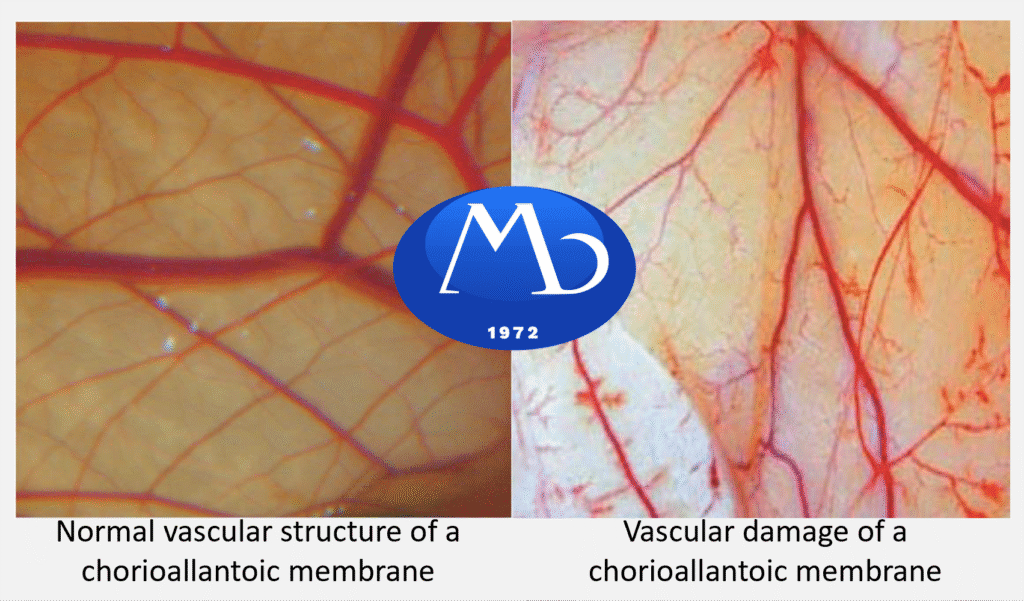Understanding the HET-CAM Test: An Alternative Approach to Eye Irritation Testing
What is a HET-CAM?
HET-CAM stands for Hen’s Egg Test on the Chorioallantoic Membrane (DB-ALM Protocol n° 96, INVITTOX Protocol 47). It uses the highly vascular chorioallantoic membrane (CAM), containing arteries, veins and capillaries, as a biological model for a mucous membrane. Because this membrane is highly sensitive to chemical irritants, it serves as an effective surrogate for identifying irritation potential, particularly for eye irritation. It responds to injury with an inflammatory process similar to what one would observe in the conjunctival tissue of an eye because of its well-developed vascularization. The HET-CAM is an alternative to the Draize Eye Test, supporting the 3Rs principle (Replace, Reduce, Refine animal use).
This test is frequently used to screen products that come in contact with the eye or the sensitive eye area prior to performing human eye irritation/string studies to support “No Tear”, “Tear Free” and Ophthalmologist tested type claims.
How Does the HET-CAM Work?
The test substance is applied directly to the CAM, and the membrane is observed for vascular damage over a 5‑minute period. Specifically, three reactions are assessed:

- Hemorrhage (bleeding)
- Lysis (vessel disintegration)
- Coagulation (clotting)
Each of these reactions is scored based on their onset time (in seconds) and the severity of the adverse reactions is evaluated. The time taken in seconds for the appearance of hemorrhage (H), lysis (L), and coagulation (C) is used to calculate an Irritation Score (IS) using the following formula:
IS = [(301 – H) x 5/300] + [(301 – L) x 7/300] + [(301 – C) x 9/300]
The Irritation Score (IS) is used to classify the ocular irritancy potential of the substance.
What Controls are used in the HET-CAM?
The Negative Control is 0.9% (w/v) sodium chloride (NaCl) is included to provide a baseline and to ensure that the assay conditions do not inappropriately result in an irritant response.
A Solvent Control is included when a test substance is diluted with a vehicle other than saline to evaluate possible confounding effects from the vehicle.
Two Positive Controls are evaluated during each experiment to verify that an appropriate response is induced. Both 0.1 N sodium hydroxide (NaOH) and 1% sodium dodecyl sulfate (SDS; also known as sodium lauryl sulfate [SLS]) in distilled water are well known for its irritation properties.
Benefits of the HET-CAM
- Sensitive to vascular and mucosal irritation
- Valuable for formulation screening before product development advances to regulatory-required studies
- Minimizes reliance on rabbit eye testing (Draize test)
Common Applications of the HET-CAM
- Eye irritation testing
- Topical product development (cosmetics, personal care)
- Raw material screening
Conclusion
The HET-CAM test is an efficient tool for eye irritation screening. While it may not replace regulatory testing requirements on its own, it provides an important alternative for early-stage R&D screening and formulation optimization.
Interested in adding HET-CAM testing to your safety assessment plan? Contact MB Research Labs to explore our full suite of in vitro eye irritation tests.



